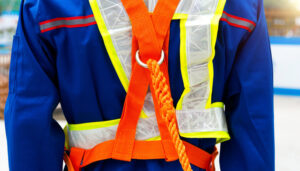Helicopter Rescue Flights in Mountains
When mountains tower high and the terrain below is treacherous, helicopter rescue flights may be the only way to get people in need of help to safety. These operations require specialized equipment, personnel, and a thorough knowledge of mountain terrain – all while navigating risks that could otherwise spell disaster. In this blog post, we’ll look at helicopter rescue flights in mountainous regions, detailing the equipment and procedures involved as well as discussing the risks and rewards that come with such operations.
Helicopter Rescue Flights in the Mountains
Helicopter rescue flights are a critical component of search and rescue operations in mountainous regions. Without the ability to fly at high altitudes, it would be difficult or even impossible to reach individuals who were stranded, injured, or otherwise in need of assistance. Helicopters offer a unique advantage over other forms of transportation due to their ability to hover in the thin air of higher altitudes, allowing them to navigate terrain that would be impossible for other aircraft.
Rescue helicopter operations require specialized equipment and personnel, as well as an understanding of the unique terrain present in mountain regions. Pilots must be especially skilled and knowledgeable about mountain terrain and the procedures for quick, safe flight. Helicopters can also be used to transport medical personnel, essential supplies and equipment, or other individuals to their destination quickly and securely.
Specialized Equipment and Personnel for Mountain Rescues
When helicopter rescue flights are required, specialized equipment and personnel must be on standby in order to safely complete the mission. It’s important that helicopter pilots understand mountain terrain, including prevailing winds and weather patterns in the area. Additionally, helicopter crews must be familiar with complex operations procedures for quick and safe flight. Important safety considerations include avoiding turbulence caused by downdrafts or flying over tall peaks.
The helicopter itself requires certain modifications to enable successful flight in mountainous regions – most notably a supplemental oxygen system for higher altitudes and powerful engines that can maintain lift without strain. Additionally, maintenance teams must thoroughly inspect helicopters before each mission to ensure proper functionality and safety. Finally, medical personnel should always accompany rescue helicopter crews in order to provide immediate medical attention if necessary.
Understanding Mountain Terrain for Safe Flight
In order to safely and quickly complete helicopter rescue flights in mountainous regions, pilots must possess an intimate understanding of mountain terrain. This includes knowledge of the prevailing winds and weather patterns in the area, as well as potential sources of turbulence or downdrafts caused by the natural topography. Pilots must also be aware of any potential obstacles such as power lines or other aerial hazards that could endanger their mission. A thorough preflight review is essential for a successful helicopter rescue flight.
Being able to read and interpret maps is also important for helicopter rescue operations; particularly during night missions when darkness obstructs a pilot’s vision. Pilots must be able to locate and identify landmarks, as well as interpret topographical features on a map in order to successfully navigate the terrain without relying solely on visual cues.
In addition to understanding mountain terrain, helicopter pilots must also be familiar with the operations procedures for quick, safe flight. This includes knowing when it is necessary to descend into valleys or climb higher altitudes –- depending on the mission requirements –- in order to avoid turbulence caused by downdrafts or flying over tall peaks.
Safety Tips from CTS
Check the weather and other conditions prior to takeoff
Consult with local authorities or meteorologists to ensure that the forecast and other conditions are suitable for safe flight.
Plan an alternate route and landing site
Plan alternate routes and landing sites if their primary route is inaccessible due to hazards such as weather, terrain, or other issues.
Monitor altitude levels
Mountainous terrain can make it difficult to accurately gauge altitude levels without reference points, so pilots should be constantly aware of their location in relation to mountains peaks.
Avoid flying close to cliffs or ridges
Pilots should avoid flying close to cliffs, ridges, or other hazardous areas within the mountainous region as these can increase turbulence and put additional stress on the aircraft structure.
Maintain communication with ground personnel
Maintain communication with ground personnel in order to ensure they are aware of any changes or hazards along their route of travel.
Prepare for emergencies
Familiarize yourself with onboard safety equipment and procedures as well as alternative routes or destinations in case of adverse weather conditions before beginning a flight over mountain regions.
Take Care in the Mountains
Helicopter rescue flights are an essential component of search and rescue operations in mountainous regions. Specialized equipment and personnel are required for successful helicopter operations, as well as an intimate understanding of mountain terrain. Helicopter pilots must possess knowledge of the prevailing winds and weather patterns in the area, potential sources of turbulence or downdrafts caused by the natural topography, as well as any potential obstacles such as power lines or other aerial hazards that could endanger their mission. Additionally, helicopter crews must be familiar with complex operations procedures for quick and safe flight. With these considerations in mind, helicopter rescue flights can provide a valuable service to individuals in need of assistance due to their ability to fly in challenging terrain quickly and safely.
CTS provides training packages and courses designed for safer rotor wing flying. Feel free to email us at train@www.ctsys.com and let our team curate a training package to suit your company’s needs.










